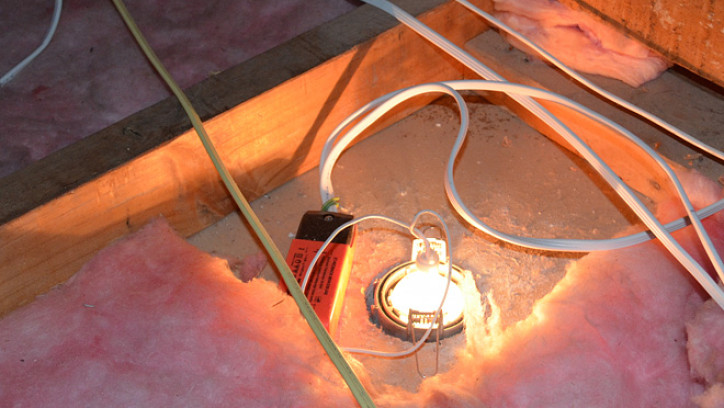Downlights and recessed lights
Last updated: 9 August 2023

Older technology downlights require a hole in your ceiling and insulation that lets your warm heated air escape into the roof space.
Downlights – make smart choices
While downlights, also known as recessed light fittings, have been a popular option in recent years, older types can undermine the effectiveness of your ceiling insulation.
This is because some require ceiling insulation to be kept clear of them. This creates easy paths for heat and moisture to escape into the roof space. Modern LED downlights can now be covered with insulation stopping the heat loss.
LED lighting on the Gen Less website has information about energy efficient lighting.
The problem with older technology downlights
If you have older type downlights that use incandescent or halogen light bulb, it is best to replace them all with modern IC or IC-F rated LED downlights that use much less electricity and that can be covered with insulation, making your home easier to heat.
There are a wide range of IC and IC-F rated LED downlights available on the market. If you are not sure of the type you need, check with a registered electrical contractor.
Older technology downlights reduce the effectiveness of your ceiling insulation by creating a hole into the roof space above. This is made worse by the need to leave a safety gap between some downlights and insulation in the ceiling.
Incandescent or halogen bulbs that were used in older downlights get very hot, as do any associated transformers, so fire is a risk. Safety regulations require a 100mm gap between older technology downlights and insulation.
The result of these holes is that your warm heated air is drawn up into the colder roof space and your ceiling insulation cannot work as well as it should. The more of these older technology downlights you have, the less effective your ceiling insulation will be.
Check the rating of any downlights you have installed. Some downlights are CA-rated (for "closed abutted"), which means that insulation can at least be installed close to the light can. Insulation Contact (IC) and Insulation Contact – Fire Resistant rated (IC-F) ones can have insulation installed up to and over them, provided the insulation can cope with temperatures up to 90°C.